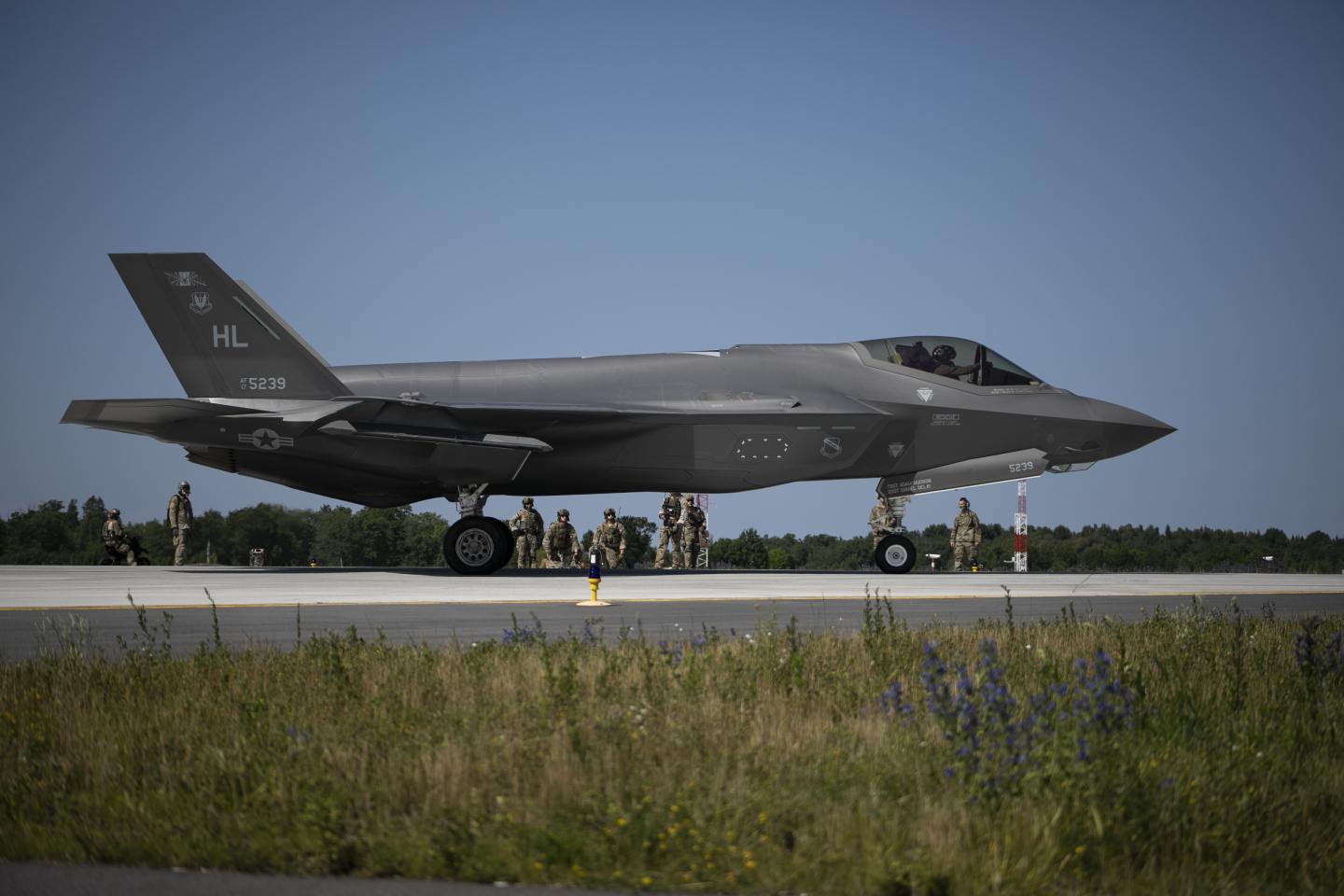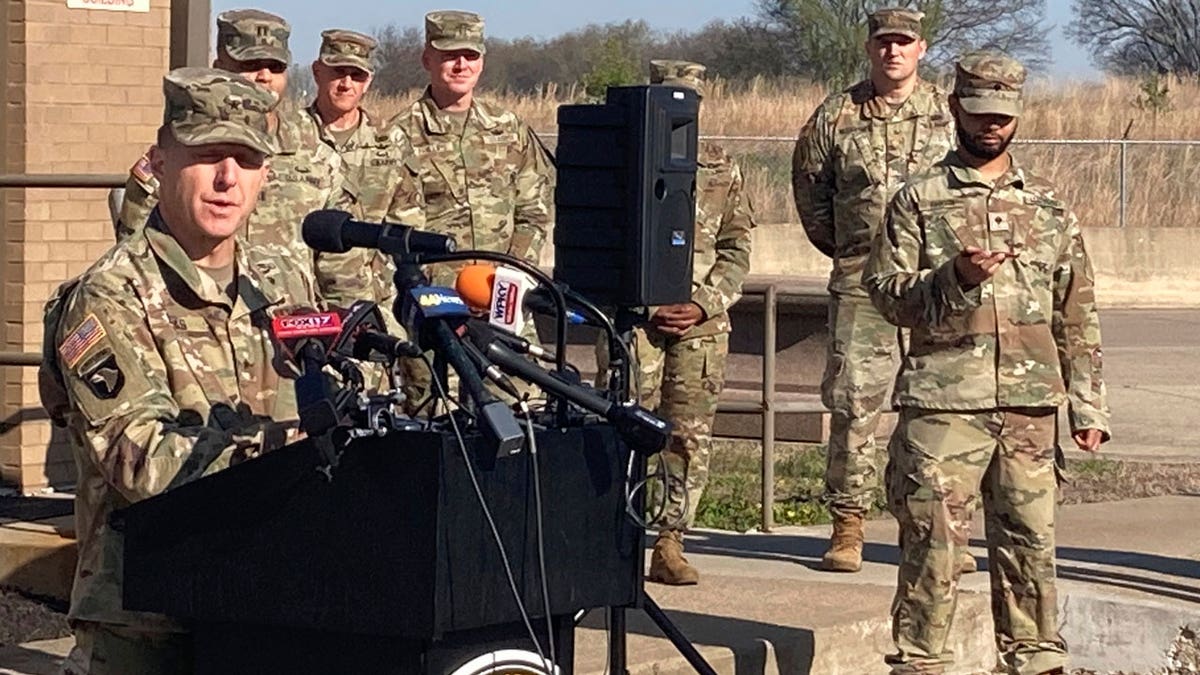Russia's Military Buildup: What It Means For Europe

Table of Contents
Modernization of Russia's Armed Forces
Russia's military modernization is a multifaceted endeavor aimed at enhancing its conventional and nuclear capabilities. This ambitious program significantly alters the regional balance of power and poses a considerable challenge to European security.
Focus on Advanced Weaponry
Russia's investment in advanced weaponry is a key component of its military modernization. This includes significant advancements in hypersonic missiles, nuclear weapons, and modernized air defense systems.
- Hypersonic Missiles: The development of hypersonic missiles like the Avangard and Zircon represents a significant leap in military technology. These weapons are incredibly difficult to intercept due to their speed and maneuverability, potentially rendering existing defense systems obsolete. This poses a serious threat to NATO members and necessitates a reassessment of defensive strategies.
- Nuclear Arsenal: Russia maintains a large and sophisticated nuclear arsenal, a cornerstone of its military doctrine. Modernization efforts focus on improving the reliability, accuracy, and survivability of its nuclear forces. This continued investment reinforces Russia's nuclear deterrence capabilities and adds to regional instability.
- Modernized Air Defense Systems: Russia has invested heavily in upgrading its air defense systems, including the S-400 and S-500 systems. These systems are designed to neutralize airborne threats, including cruise missiles and aircraft, further bolstering Russia's defensive capabilities. Regular large-scale military exercises demonstrate Russia's capacity to deploy and utilize these advanced weapons systems.
Technological Advancements
Beyond conventional weaponry, Russia is actively enhancing its technological capabilities in areas crucial for modern warfare.
- Cyber Warfare: Russia has demonstrated a sophisticated capability in cyber warfare, targeting critical infrastructure and government systems. This poses a significant threat to the cybersecurity of European nations.
- Electronic Warfare: Russia's investment in electronic warfare capabilities aims to disrupt enemy communications and sensor systems, gaining a crucial advantage on the battlefield. These capabilities are a key component of their overall military strategy.
- AI in Warfare: Russia is actively exploring the integration of artificial intelligence into its military systems, potentially leading to advancements in autonomous weapons systems and improved battlefield decision-making. The implications of AI's role in warfare are still largely unknown, presenting both opportunities and challenges for military strategists.
Increased Military Spending and its Impact
Russia's increased military spending fuels its modernization efforts and significantly impacts its regional influence.
Budget Allocation and Priorities
Russia's military budget consistently ranks among the highest globally. This spending is prioritized towards modernizing its armed forces and developing advanced weaponry.
- Statistics on Military Spending: While exact figures vary depending on the source, Russia’s military spending consistently constitutes a significant portion of its GDP, exceeding that of many European nations.
- Comparison with Other European Powers: Compared to other European powers, Russia's military spending often represents a disproportionately large investment in its armed forces, reflecting its geopolitical ambitions.
- Economic Impact of Military Spending: The economic impact of such high military spending on Russia's domestic economy is a subject of ongoing debate, impacting other sectors that could benefit from the investment.
Geographic Deployment and Regional Influence
The strategic deployment of Russian forces plays a critical role in projecting power and asserting influence in key regions.
- Eastern Europe: The concentration of Russian military forces near the borders of Eastern European countries has heightened tensions and fueled concerns about potential aggression.
- Arctic Security: Russia's increasing military presence in the Arctic underscores its interest in securing its northern territories and exploiting the region's resources.
- Mediterranean Security: Russia’s naval presence in the Mediterranean also supports its regional influence and allows for power projection in the Middle East and North Africa. These deployments significantly alter the regional power dynamic.
Geopolitical Implications and Response from Europe
Russia's military buildup has profound geopolitical implications, shaping Europe's security architecture and prompting a strategic response.
Impact on NATO and European Security
The ongoing military buildup has significantly impacted NATO strategy, leading to increased military presence in Eastern Europe and enhanced defense cooperation among allies.
- NATO Response to Russian Actions: NATO has responded to Russia's actions by increasing military exercises, strengthening its eastern flank, and improving its collective defense capabilities.
- Strengthening of Alliances: The perceived threat from Russia has fostered closer cooperation between NATO members and strengthened transatlantic ties. This enhanced cooperation is crucial for deterrence and collective security.
- Implications for Collective Defense: Russia’s military actions have highlighted the importance of collective defense within NATO and renewed focus on the alliance's core principles.
Potential for Conflict and Escalation
The potential for conflict stemming from Russia's military buildup remains a significant concern.
- Ukraine Conflict: The ongoing conflict in Ukraine serves as a stark reminder of the potential for escalation and the devastating consequences of armed conflict. The implications of this conflict resonate across Europe and beyond.
- Potential Flashpoints: Several potential flashpoints exist in Eastern Europe, where the proximity of Russian forces and potential for miscalculation increase the risk of unintended escalation.
- Strategies for Conflict Prevention: Effective strategies for conflict prevention, including diplomatic engagement, de-escalation measures, and transparency building, are crucial to mitigate risks and maintain peace.
Conclusion
Russia's military buildup is a complex issue with profound implications for European security. The modernization of its armed forces, increased military spending, and strategic deployments all contribute to a heightened sense of uncertainty and the potential for conflict. Europe must develop robust strategies to counter this challenge, prioritizing enhanced defense cooperation, diplomatic engagement, and a commitment to deterring further aggression. Ignoring the ramifications of Russia's military buildup is not an option; understanding its impact is crucial for maintaining European stability and security. Continue researching and analyzing Russia's military buildup and its global impact to stay informed about this critical geopolitical issue.

Featured Posts
-
 Louisville Eateries Face Hardship Due To River Road Project
Apr 29, 2025
Louisville Eateries Face Hardship Due To River Road Project
Apr 29, 2025 -
 D C Black Hawk Crash Analysis Of Pilots Decision Making And Deadly Outcome
Apr 29, 2025
D C Black Hawk Crash Analysis Of Pilots Decision Making And Deadly Outcome
Apr 29, 2025 -
 Life In Spain A Tale Of Two American Expats
Apr 29, 2025
Life In Spain A Tale Of Two American Expats
Apr 29, 2025 -
 Porsche 911 Za 1 33 Mln Zl Najpopularniejszy Model W Polsce
Apr 29, 2025
Porsche 911 Za 1 33 Mln Zl Najpopularniejszy Model W Polsce
Apr 29, 2025 -
 Damon Agrees With Trump Believes Pete Rose Deserves Hall Of Fame Spot
Apr 29, 2025
Damon Agrees With Trump Believes Pete Rose Deserves Hall Of Fame Spot
Apr 29, 2025
